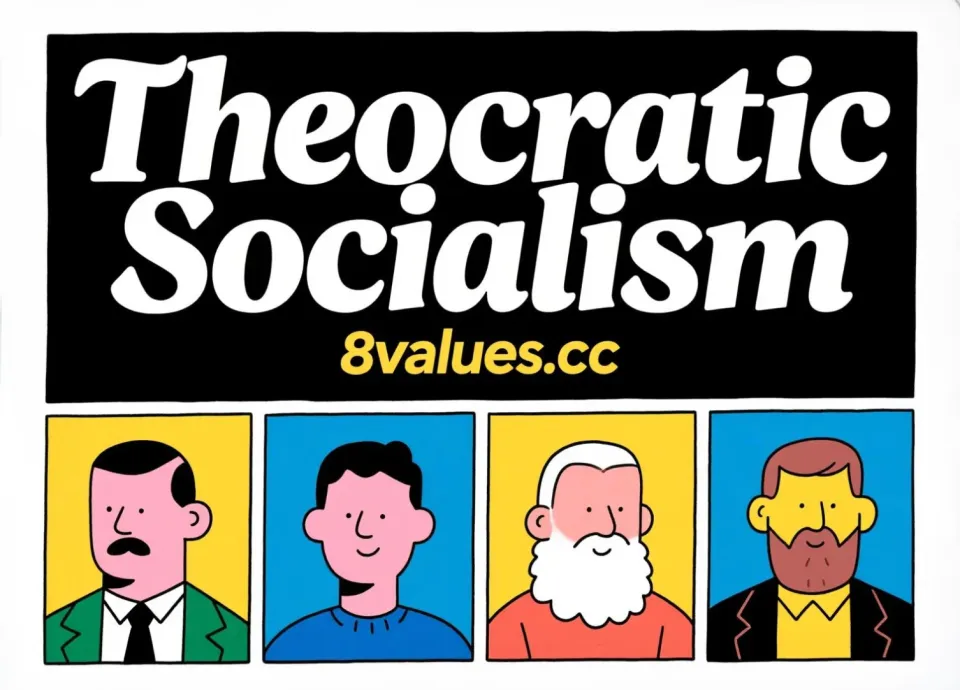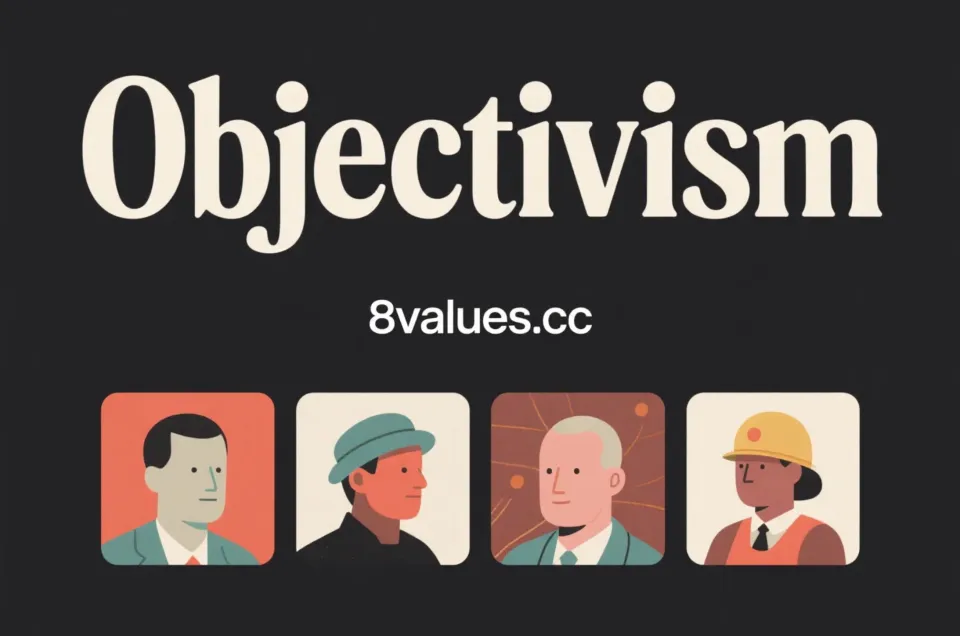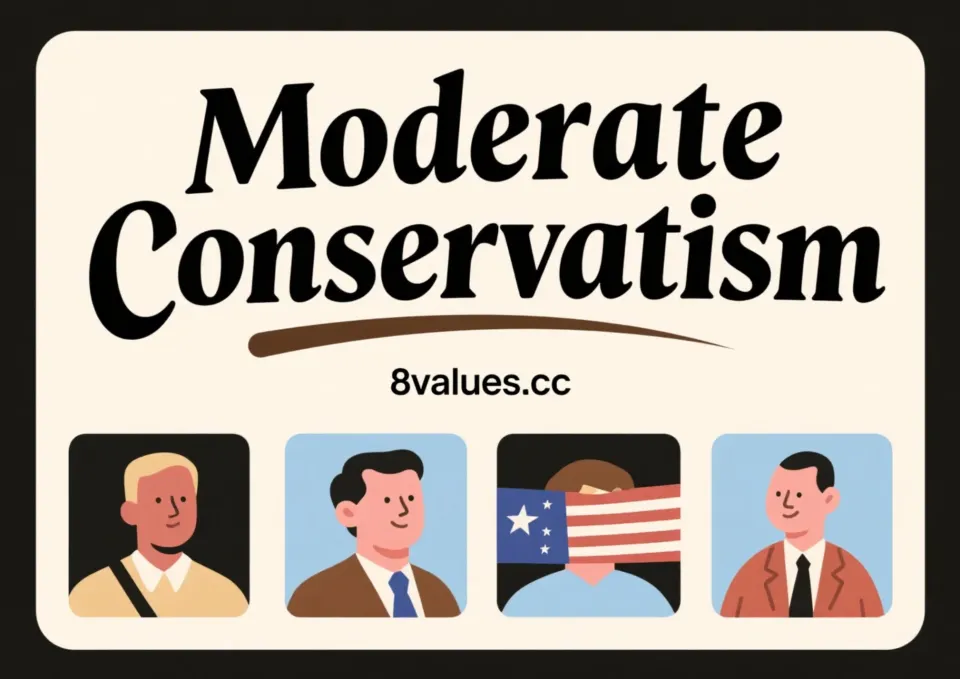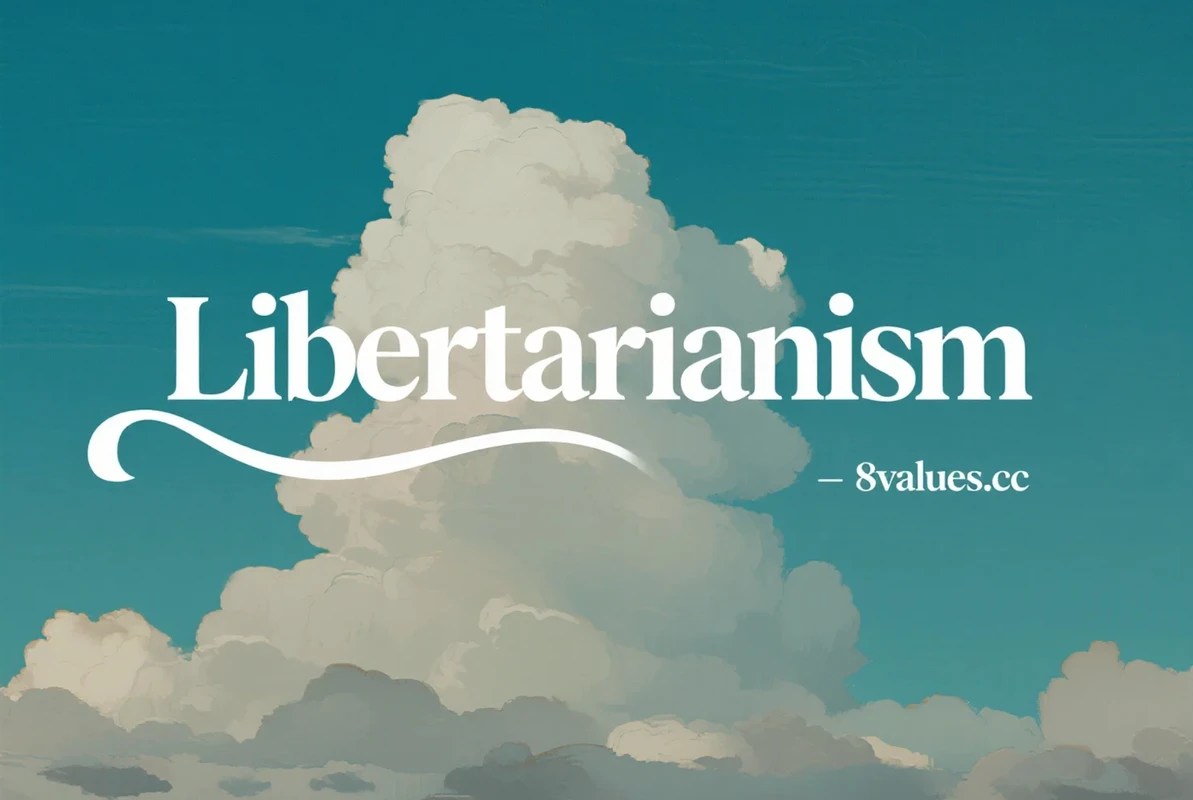8values Political Ideology Values Test: In-depth analysis of your multi-dimensional political and ideological portrait
Explore the 8values political quiz to learn about your multi-dimensional political stance and values. This article will introduce in detail the operating principle of 8values, the four core axes, 52 ideological interpretations, and provide critical analysis to help you gain in-depth self-understanding. Visit the 8Values Quiz official website to start your journey of exploring political ideas.
In the digital age, online testing has become a popular way for people to explore themselves and understand the complex world. Among them, 8values political test has gained widespread attention around the world with its unique multi-dimensional political positioning method. Not only does it provide a perspective beyond the traditional single political spectrum, it also helps users explore their political beliefs in more detail and visualize them into easy-to-understand graphical results.
This article will give you an in-depth analysis of everything about the 8values political test, from its origin and core mechanism to the four axes, eight dimensions, and 52 ideological results, and conduct critical analysis to help you fully understand this tool.
How to test? Enter the 8Values test official website address and click "Start Test" to enter the answer page. By completing 70 multiple-choice questions, you will receive a detailed interpretation report of your ideological and political leanings.
What is the 8values Politics Test? Principle and Origin
8values is essentially a political values orientation questionnaire designed to quantify a user’s percentage score on eight different political values. The test presents users with a series of statements, and they answer based on their opinions ranging from "strongly agree" to "strongly disagree." Each response slightly affects the final score, which is compared to the maximum possible score for each value to derive a percentage.
This test was originally a static web page project based on GitHub. Its core function is to quantify users' political values through 70 carefully designed questions . Its success and popularity have spawned many derivative versions, such as 9Axes, PolitiScales, 8D-PolComp, etc., which, while retaining the core framework, have expanded functions and dimensions, and even include data collection as one of their core functions.
Unlike some tests (like the early Political Compass) that only offer a binary "agree/disagree" option, 8values offers a " neutral " option. This design provides an outlet for nuance for “insightful thinkers” who have difficulty with simple answers to general statements. Overall, 8values' question setting is considered an improvement over the Political Compass test .
If you are curious about your political leanings and want to know your initial political values and ideologies, you can visit the 8 values political test official entrance to start the test.
In-depth analysis: the four core axes and eight values of 8values political test
At the heart of the 8values test is its multidimensional framework, which divides the political spectrum into four separate axes , each representing a set of opposing values. This structure is intended to provide users with a more nuanced political positioning than traditional two-dimensional models. These axes are: economic, diplomatic, civil and social.
Economic Axis: Equality vs. Market
The economic axis measures the user's stance on economic policy.
- Equality : Respondents with high equality scores believe the economy should distribute value equally among people. They tend to support progressive taxation, social welfare programs, and, in extreme cases, socialism.
- Markets : Respondents with higher Markets scores believe the economy should focus on rapid growth . They tend to support low taxes, privatization, deregulation and, in extreme cases, laissez-faire capitalism.
Diplomatic Axis: Nation vs. World
The diplomacy axis measures users' attitudes toward inter-state relations and global politics.
- Nation : Respondents with higher nation scores are patriotic and nationalistic . They typically believe that each country should govern itself, value military strength, sovereignty, and may support aggressive foreign policies or even oppose immigration.
- Globe : Respondents with higher Globe scores are cosmopolitan and globalist . They advocate that all human members around the world should participate in politics together, emphasize peaceful diplomacy, international cooperation and integration, and in extreme cases support the establishment of a world government or international organization.
The Civic Axis: Freedom vs. Authority
The Civic Axis is designed to measure users' perceptions of the balance between individual freedoms and state power.
- Liberty : Respondents with higher Liberty scores believe in strong civil liberties and oppose state interference in personal lives. It is important to note that this refers specifically to civil liberties, not economic liberties.
- Authority : Respondents with higher authority scores believe in strong state power . They tend to support state intervention in personal lives, government surveillance, and in extreme cases censorship or authoritarianism.
Social Axis: Tradition vs. Progress
The social axis measures users' attitudes toward social change and values.
- Tradition : Respondents with higher Tradition scores believe in traditional values and strict moral principles . They are often associated with religious beliefs and support maintaining the social status quo or restoring the old order.
- Progress : Respondents with higher Progress scores believe in social change and rationalism . They are often associated with secularism, environmentalism, and support for scientific and technological research, and may also emphasize LGBTQ+ rights.
Together, these axes and values form the basis of your political portrait. To get a more visual idea of where you sit on these axes, you can check out the 8values political spectrum analysis page .
8values Test Results Interpretation: Your Political Ideology Portrait
After completing 70 questions, the 8values test presents your score on the eight values as a percentage and visualized through four separate compass charts. For example, "The Economy: 75% Equality vs. 25% Market." This intuitive design makes complex eight-dimensional results easy to understand.
In addition to a percentage score, the test will match your score to a specific political ideology label , such as "liberal socialist" or "social liberal." Eight values provides up to 52 political ideological labels , covering from left-wing extreme trends such as anarcho-communism, Marxism, and Stalinism, to right-wing extreme trends such as liberalism, conservatism, fascism, Nazism, and anarcho-capitalism, as well as diverse positions such as centrism. You can visit 8 values all results to view detailed descriptions of all 52 ideologies.
8values Limitations and Critical Thinking of Politics Tests
Despite its popularity, the 8values test faces multiple criticisms as a rigorous political psychology tool.
Generalization issues and ambiguity
A major problem with the test is that its statements are too general and vague , failing to capture the nuances of thought. For example, questions like "Government intervention is a threat to the economy" or "Our national values should be spread as much as possible" lack specific context, type, or degree, making it difficult for a critical thinker to give a simple "agree" or "disagree" answer. Sharing his testing experience, one user mentioned that as a conservative Christian, he often chooses to "slightly agree/disagree" or "neutral" rather than extreme positions because of the nuances of the issue. This ambiguity may result in results that do not accurately reflect the complex real positions of the subjects.
Stereotypes and misuse of labels
Critics argue that the 8values test reduces complex political theories and ideologies into " caricature-like " labels rather than encouraging "informative" thinking. For example, associating high-scoring "progressives" with "atheists" or "optimists" is considered a form of "silly ignorance." This oversimplification of ideology not only potentially misleads users, but also reflects the test’s inherent flaws in translating abstract values into concrete political labels.
Cultural and regional bias
The test has also been noted to have U.S.-centric assumptions . For example, support for Medicare for All, which is generally considered a neutral or mainstream view in Western Europe, might be labeled "extreme" on this test. Such cultural and regional differences suggest that some of the questions and presupposed ideological models tested may not accurately reflect political realities in non-Western or non-American contexts.
The disconnect between data and intellectual context
Some researchers have questioned the fundamental design of the test, arguing that it assumes that test takers have no prior educational background and puts " bias on the same footing as informed opinion ." This method of quantifying vague opinions through numbers has been criticized as the "number-crunching behaviorist fallacy," arguing that numbers cannot reveal the entire truth in describing matters such as political beliefs that require maximum understanding through "textual propositions" and "qualitative evidence." Therefore, the test results should be viewed as a heuristic "estimate" rather than a rigorous academic diagnosis.
8values and the political compass: the evolution of the multidimensional political spectrum
The 8values test is often compared to the older, better-known Political Compass . Both seek to move beyond the traditional single-axis left-right spectrum, but differ significantly in design, scope, and methodology.
Political Compass uses a concise two-axis model : economic (left-right) and civil (authoritarian-liberal). It aims to reveal that one's economic views and one's views on personal freedom are not always linearly related.
In contrast, 8values creates a four-axis, eight-value model by breaking down and expanding the two core axes of the political compass, and introduces entirely new diplomatic and social dimensions. This move to increase the number of axes is seen as an attempt to provide a more nuanced political portrait. For example, TLDR News notes that 8values' questions have improved overall and offer "no bias" options that Political Compass doesn't.
However, this refinement of the axis also brings new challenges. When the test bundles "nationalism" with "aggressive diplomacy," does it simply replace one large, vague "box" with several small, vague "boxes"? This approach can create an illusion of “false precision,” giving the impression of greater accuracy but may actually be just another oversimplification of a complex reality.
Recommendations and application scenarios of other multidimensional political testing tools
In addition to the Eight Values political orientation test , there are many similar online political testing tools that can help you conduct a multi-dimensional assessment of your political stance.
- 9Axes political ideology test : Based on 8values, it is expanded to 9 analysis dimensions, adding axes such as "secular-religious" and "dispersed-centralized" to further refine the ideological classification.
- PolitiScales : Analysis through 12 axes (e.g. "revolution-reform", "protection-exploitation"), particularly suitable for assessing radical political positions.
- Nolan Curve Political Compass Test : A classic two-dimensional model that locates ideology through graphical coordinates. The results are intuitive but have fewer dimensions.
- SapplyValues Political Compass Test : Focuses on policy preferences rather than abstract values, such as specific tax or environmental policy choices.
- LeftValues left-wing political spectrum test / RightValues right-wing political coordinate test : a derivative version of the specific political spectrum for the left and right, focusing on left and right ideological analysis respectively.
- 8valuesCN : An adapted version of the Chinese version of 8values developed based on the standard version of the 8values framework. The problem formulation is more in line with the Chinese context.
Each of these tools has its own focus and can be used as complementary tools to provide a more comprehensive analysis of your political stance through multi-dimensional cross-validation. The 8 values political test is suitable for academic research or personal cognitive scenarios, and helps users understand their own political spectrum positioning through quantitative methods.
For more political tests, please visit: Politics Test Center
Master your political values and start a journey of deep thinking
The 8values Politics Quiz is a popular online tool that successfully transforms complex political theory into a personal experience that is easy to understand and share. It goes beyond the limitations of the traditional single axis to a certain extent through a multidimensional model, providing users with an effective starting point for self-reflection and exploring the relationship between their values and political beliefs.
However, it is important to view the results with a critical eye . The general nature of its question design, the stereotyping of ideological labels, and the neglect of the intellectual background of the subjects suggest that its results should be viewed as a heuristic "estimate" rather than a rigorous academic diagnosis.
Ultimately, the real value of such tests may lie not in the “answers” they provide but in the “questions” they raise about politics, values, and self-perception. They prompt users to think “Why do I have this opinion?” and to reflect on where their position fits in a multidimensional space. The 8values test successfully reflects our age’s desire for simplicity, visualization, and identity, but the labels and percentages it provides are only a starting point, not an end point, for understanding complex political realities.
If you are interested in exploring political thought, you may wish to visit the 8values official website to start your test, and learn more in-depth insights through the 8values blog .






